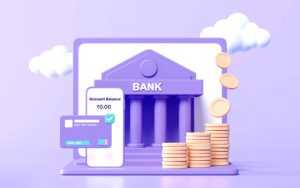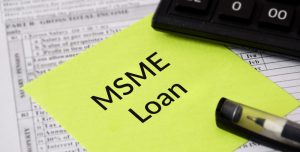What Is an ACH Transaction and What Is it Used For?

ACH payments have become the norm when it comes to repetitive payments having to be made. These payments have been created to make life easier for everybody involved. From the customers to the bank workers and the merchants, everybody knows that an ACH transaction is the way to do things nowadays. People and businesses all over the world are using this system to great effect and can save precious time that can be used to do other things like spending it with loved ones.
What Is an ACH Transaction?
When thinking about the old days of banking and transaction making, people usually tend to come up with images of bank tellers up to their elbows in papers, counting checks and double checking them with thick registers. And they are not wrong. In the old days of banking that was how things got done. But people needed something simpler, more streamline, to deal with the ever-increasing volume of papers and transactions that had to be processed. As time and technology move on, people came up with a safer and quicker way of dealing with large volumes of transactions, without having to worry about the possibility of human error. And so, the Automated Clearing House, or ACH for short, was born.
An ACH transaction is a unique way of transferring funds between bank accounts. The ACH network incorporates millions of personal and business bank accounts nationwide. This enables the network, and the people who use it, to transfer funds between bank accounts safer and faster than ever before. The ACH network is the fastest and most cost-effective way of transferring funds from one bank account to the other. This is why more and more people are choosing the ACH system for electronic funds transfers to make payments or deposits to or from their bank accounts.
But people need to understand that an ACH transaction isn’t the same as a card payment or a wire transfer. While all ACH transactions are electronic payments, not all electronic payments being made out there are ACH transactions. For instance, payments being made from credit or debit cards aren’t ACH transactions. ACH transactions are strictly those that include bank account transfers. Operating through the ACH system is the modern-day equivalent of writing checks, but without the mess of actually having to write anything. ACH transactions can substitute even other forms of payment, such as credit or debit card payments.
Examples of ACH Transaction
To better understand how working with ACH transactions looks like, think about the fact that the two main transactions being made are credits and debits. The debit part of the transaction refers to the withdraw of funds from a bank account, and is usually used for repetitive payments such as the instalments for a new car. To pay the instalments each month the customer provides a bank account number to the lender’s bank from which the funds will be withdrawn. After authorization is given, each month the lender generates an ACH and asks for authorization of payment from the customer’s bank. After the customer authorizes the payment, the money is transferred and the process is repeated next month, until the instalments are paid in full.
The credit part of the transaction process is usually used by employers depositing payrolls directly into a bank account. This way the money is split up and sent to each corresponding employee account without the employer having to fill out too much paper work. The simplest way of thinking about these transactions is by associating credit with money coming into your account and debit being the money that is deducted from your account. The beauty of the ACH system is that you have a very wide range of companies operating that can improve ACH functionality and enhance the payment experience for everybody involved in the transaction.
How ACH Payments Work
When using ACH payments, there are more parties involved than one might think at first. Besides the actual Automated Clearing House Network, that connects all the financial institutions nationwide, a series of other institutions are involved in making sure that the payment goes over without any problem.
- The first one is the Originating Depository Financial Institution. The ODFI, for short, is the bank that initiates the transaction.
- The Receiving Depository Financial Institution (RDFI) is the other banking institution that is on the receiving end of the ACH request.
- Overlooking the entire process is the National Automated Clearing House Association (NACHA). This governmental institution makes sure that everybody involved in the transaction follows the rules. This association also has the power to manage the ACH network itself, so it can make sure that any bank that is doing anything it shouldn’t be gets kicked out.
 How Do ACH Payments Work?
How Do ACH Payments Work?
The way ACH payments work is quite simple. They were especially designed to make people’s lives easier so they have to be streamline to do so. They are usually used for recurring payments such as monthly bills. For instance, when choosing the auto-pay option for any of your bills, you have to provide your account and routing number to the company offering you a certain service or product. When it’s time to pay your bill, your company’s bank (ODFI) send a request to your bank (RDFI) to transfer the money owed. After making sure that you have sufficient funds in your account to cover the payment, and signing the authorization, the funds are transferred and the process repeats itself every month.
ACH payments made life easier for everybody that has been using them. There’s no more need for you to walk around with money and stand in lines and fill out forms to pay your monthly dues. All you have to do is set up ACH transactions from your bank account for all of your utilities (gas, water, electric, phone, internet etc.) and just enjoy the time you’ve saved doing something you enjoy.
Disadvantages of ACH Payments
Although ACH debit is great when it comes paying off the bills, it does come with a series of drawbacks:
- You have to give up some control over the time and amount you are willing to pay monthly;
- You have to share some sensitive personal information, such as your bank account number, with other parties. This might expose you to data leaks and frauds.
- Although no error can be made on your part, billing errors may appear and they may lead to some serious problems for you and your finances
- Payments might be done for services no longer in use. This situation can occur if you don’t see the bills.






